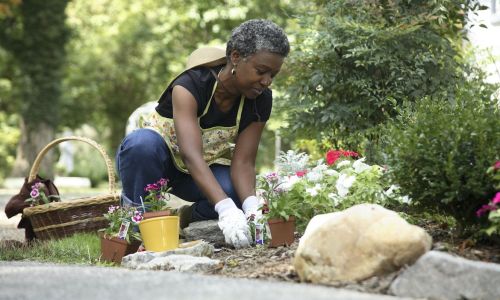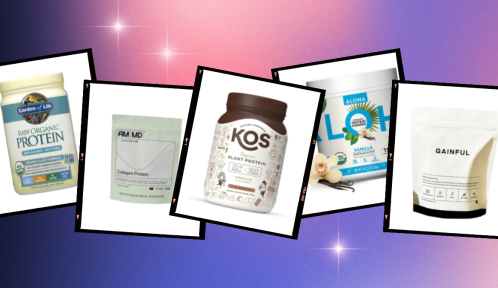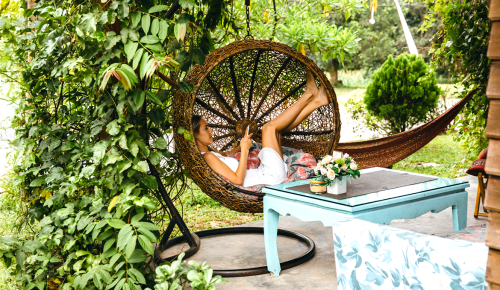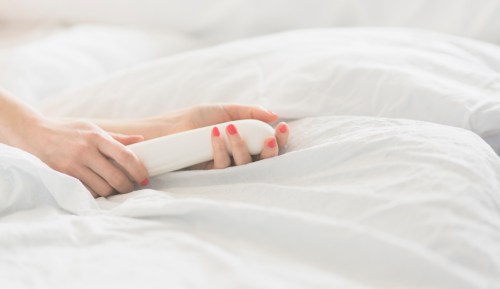Our editors independently select these products. Making a purchase through our links may earn Well+Good a commission
Whether it’s looking at nature and being surrounded by the natural world, “it’s in our DNA to feel better when we’re near plants,” says gardening expert Clive Harris, creator of the sustainability blog DIY Garden, who’s sharing his gardening checklist below. Not only do plants make us happy, but they also reduce stress levels. Even just smelling and touching a few indoor plants can have positive impacts on our health and well-being and lead to lower stress and anxiety levels, according to research published in the Journal of Physical Anthropology. “Plant soil is also a great way to improve your mental health, as there’s a bacterium in soil called M. Vaccae, that stimulates our happy hormone serotonin in the same way antidepressants do,” Harris adds.
Experts in This Article
gardner, blogger, and founder of DIY Garden
With so many benefits, it’s no wonder people are taking up gardening, as well as buying houseplants, to connect with nature right in the comforts of their home. “The houseplant market has doubled in the past few years as people caught on to how wonderful they are in an apartment or on a balcony,” Harris says.
When you’re just get started, it’s natural to want some expert advice on how to get your garden to grow.
Here’s a gardening checklist for beginner green thumbs
1. Do a little research on your plants
Different plant species need different care approaches. “For example, a cactus is very different from a peace lily, and snake plants are different from ivies, so research prior to make sure you know you’re giving your plants the right care they need,” Harris says.
2. Plant according to sun and shade needs
Placing plants in the wrong spot is the biggest mistake people make in the garden, according to Harris. “It’s important to choose ‘the right plant for the right place.” This means shade-loving plants have shade and sun-loving plants have sun,” he says. Ferns and hydrangeas love the shade, for example, whereas roses and lavender love the sun. Plant them in the right spot, and they’ll thrive. This is intel you should be able to find in your research, or on the tag or seed pack for your plants. If not, ask an associate at the nursery or garden where you go to pick out your plants.
For indoor plants, Harris recommends keeping them far away from heat sources. “Choose light, airy places away from radiators and full sun for glossy foliage plants,” he says.
3. Regularly check for pests
In particular, aphids, slugs, and snails can damage your outside plants. “Aphids usually attack new growth so look there first, and if you see them, act straight away,” he says. “Use soapy dishwater and rubber gloves to rub aphids off the stems,” he says. Slugs and snails can be kept at bay with copper tape, eggshells, and sheep wool. “Indoor plants get pests too, with mealybugs being common, so use neem oil or rubbing alcohol to kill them and repot afterwards to make sure any eggs are destroyed too,” he says. Take note: you may need to do this a few times.
4. Give them a good soak as needed
How often you need to water your plants will depend on the type. But all plants respond well to a long soak of water when they’re starting to dry out. There are very few that benefit from daily watering or a dribble here or there.
With outdoor plants, it’s important not to underestimate the water requirement of container pots. “It’s not only the sun that dries them out, but also wind does too, and containers need at least a weekly drench in the growing months and most likely a weekly feed too,” he says. In really hot weather, hanging baskets and plants like tomatoes might need a daily water supply and replenishment.
Indoor plants need a little more care when it comes to watering. “Only water your plant when the topsoil is dry, as every day watering will drown and rot the roots,” Harris says. “Check each week, hold off if the soil is still damp, and take note: You should never leave your plant in a container of water—soak it in the sink, let it drain, and then put it back in its decorative pot.”
5. Turn your indoor plants weekly
“Turn indoor container plants a quarter of a turn each week so each side gets the same amount of sun and grows evenly,” says Harris. All plants will stretch for light, and so by turning them frequently, your plants will end up straight.
6. Follow feed protocols accordingly
“Strong plant food that’s given to plants too often will kill any plant, where their leaves will turn yellow and they’ll collapse,” Harris says. So read fertilizer instructions and plant labels before feeding your plants, and make sure you adhere to their advice.
7. Re-pot plants as necessary
If you’re doing a good job, your plants in containers will outgrow their homes. That means that you’ll need to re-pot when you start to see the roots start showing. “Rootbound plants struggle to take up water and nutrients and start to fail, and that’s where you’ll need to move to the next size pot when roots appear in drainage holes or the plant is bursting at its seams,” Harris says.
8. Prune at the appropriate time
While doing your research, if you decide on flowing plants, make sure you figure out how they prefer to be pruned once they bloom. “Some plants only flower on old wood, so if you cut it all back in autumn, you’ll have no flowers next year,” Harris says.
Essential tools for first-time gardeners
Hand trowel
“A hand trowel is a small spade used for digging container soil and shallow depth borders,” says Harris. You can use it to make a planting hole by stabbing it into the soil and dragging it towards you, as if you’re rowing a boat. They are versatile garden tools and according to Harris, the number one essential.
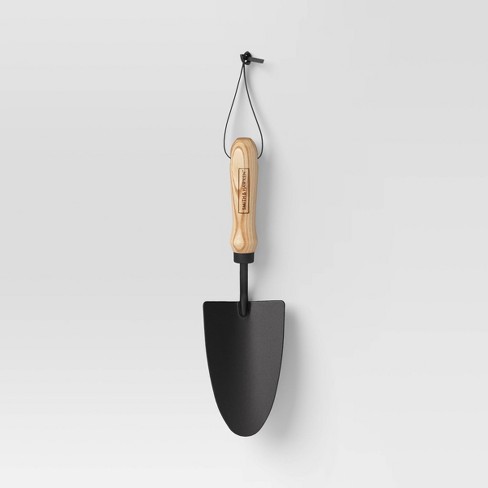
Smith & Hawken Digging Spade Shovel with Hardwood Handle Black — $10.00
Hand fork
“It’s best used for weeding and loosening soil before using a hand towel to plant up,” Harris says. Small hand forks are especially useful for when you need to weed around plants that are close together without disrupting the roots.

Smith & Hawken Digging Cultivator with Short Hardwood Handle — $10.00
Border spade
A full-size spade is an essential tool for gardens that have large borders. It’s used to turn over soil or make large, straight-sided holes. “Use your foot to press the spade into the soil and your arms to turn soil over,” Harris says. Be sure to wear tough, close-toed shoes you don’t mind getting dirty.
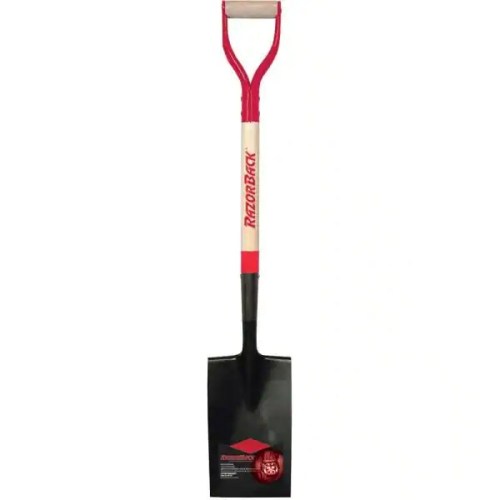
Razor-Back 28 in. Wood D-Handle Border Spade — $33.00
Border fork
Similar to a full-sized spade, the border fork differs in that it’s pronged and breaks soil into chunks, without requiring you to lift as much soil weight when doing so. “If you’re digging a border, use a garden fork to break up soil before moving onto your spade to make a planting hole,” says Harris. Just push down on the forkhead with your foot, and pull the fork backward to turn the soil.
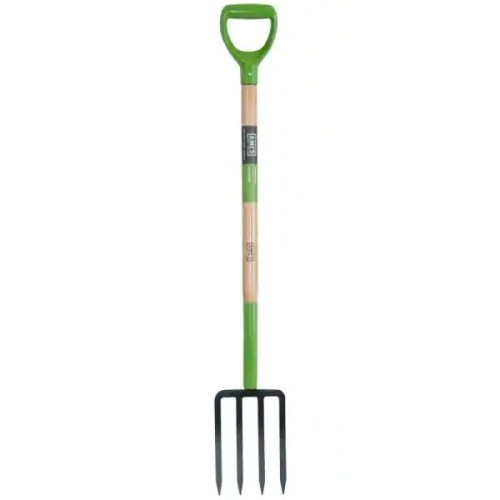
Ames 4-Tine Forged Spading Fork — $45.00
Gloves
Gloves protect your hands from abrasion and dirt. “Choose thick leather gloves if you’re pruning or cutting brambles and nettles back and lightweight gloves if you’re just weeding or planting,” says Harris.
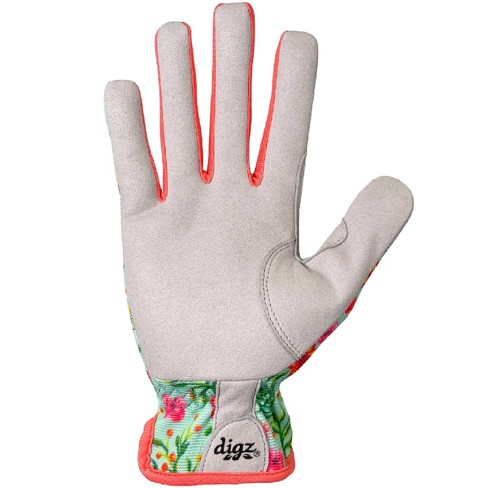
Digz Planter Work Gloves — $10.00
Watering can
All plants need water! A watering can should be easy to lift, so don’t buy the biggest you can find. “Choose one with well-fitting ‘rows’ that sprinkles water evenly over soil,” Harris says. “A big splash of water without rows disrupts soil structure and washes smaller plants away,” he explains.
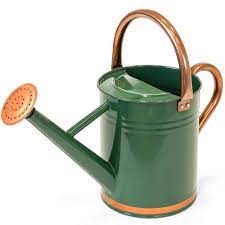
Best Choice Products Watering Can — $35.00
Secateurs
Secateurs are tough garden scissors and are needed for pruning back shrubs and other cutting jobs. They have large comfortable handles and safety blades that lock when you’re not using them. “Choose bypass motion secateurs because they cause less damage to living branches than anvil types,” Harris suggests.
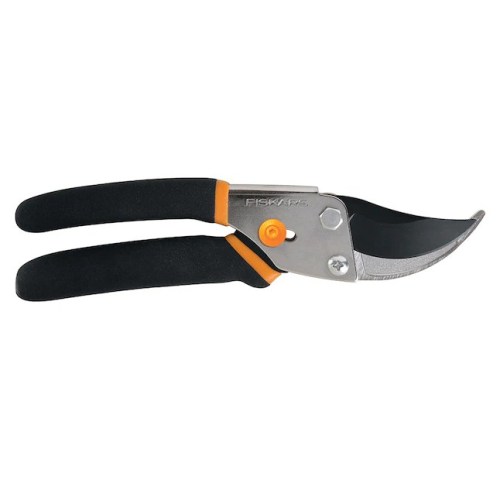
Fiskars Bypass Pruner — $10.00
Fertilizer
Fertilizer, mulch, or any kind of plant food is important to best take care of your garden and plants and to provide them with high quality nutrition. “Boost their nutrient uptake with chicken manure, horse manure, or liquid seaweed/tomato food, especially if you have container plants, which are limited to what’s in the pot,” he says.
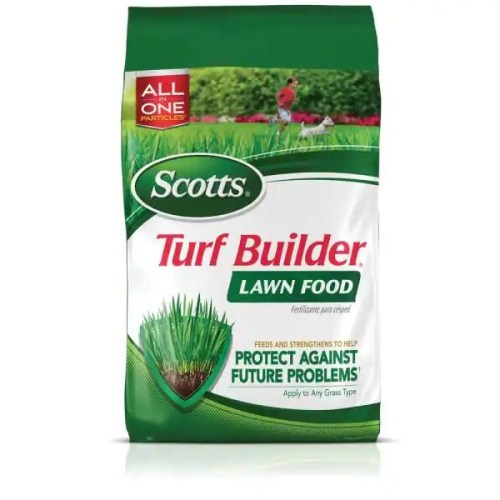
Scotts Turf Builder Lawn Fertilizer — $21.00
Essential tools for houseplants owners
Decorative pot
Houseplants usually arrive in thin plastic pots that have drainage holes in the base, and you’ll want to keep the pots, rather than remove them. “You should always keep your plant in one of these so you can water and drain it effectively,” he says. Then, choose a decorative pot without drainage holes and put the plastic pot inside it for display purposes.

Smith & Hawken Indoor/Outdoor Earthenware Planter — $27.00
Mister or sprayer
“Many leafy green foliage plants love misting because it replicates their natural environment e.g. the Amazon rainforest floor, so save an old kitchen cleaner bottle or buy a houseplant sprayer to wash off dust and increase humidity around foliage plants,” he says. It’ll help them glow.

Miracle-Gro Ready-To-Use Orchid Plant Food Mist — $5.00
Bigger drainage pots and compost
Every year or so houseplants need transplanting to a larger pot with fresh new compost. “Always use free-draining, good-quality compost, since garden soil is just asking for problems, as it’s heavy, claggy, and introduces pests,” he says.
Plant food
“Check the label, but it’s likely your houseplant will need a very weak fertilizer once a month, with cactus, succulents, and orchids being exceptions, needing even less,” Harris says. Houseplants need regular food because they use up the pot’s available nutrients quickly, and Harris explains that liquid plant food is the best option, here. It’s an easy way to restore nutrients that houseplants need in order to maintain good health.
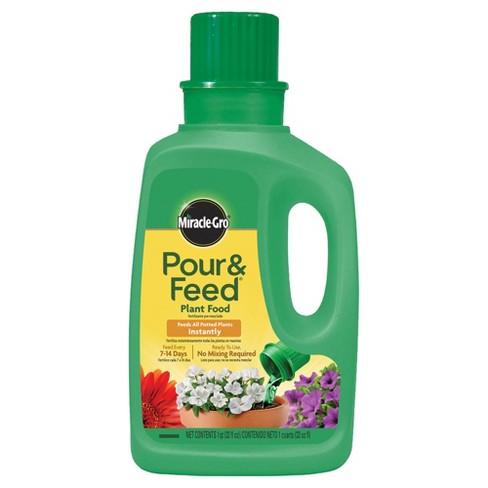
Miracle-Gro Pour & Feed Liquid Plant Food Ready to Use — $6.00
Oh hi! You look like someone who loves free workouts, discounts for cutting-edge wellness brands, and exclusive Well+Good content. Sign up for Well+, our online community of wellness insiders, and unlock your rewards instantly.
Sign up for the Well+Good SHOP Newsletter
Get exclusive deals on wellness, beauty, fitness, and food products that have been hand-picked by our editors.
Got it, you've been added to our email list.
